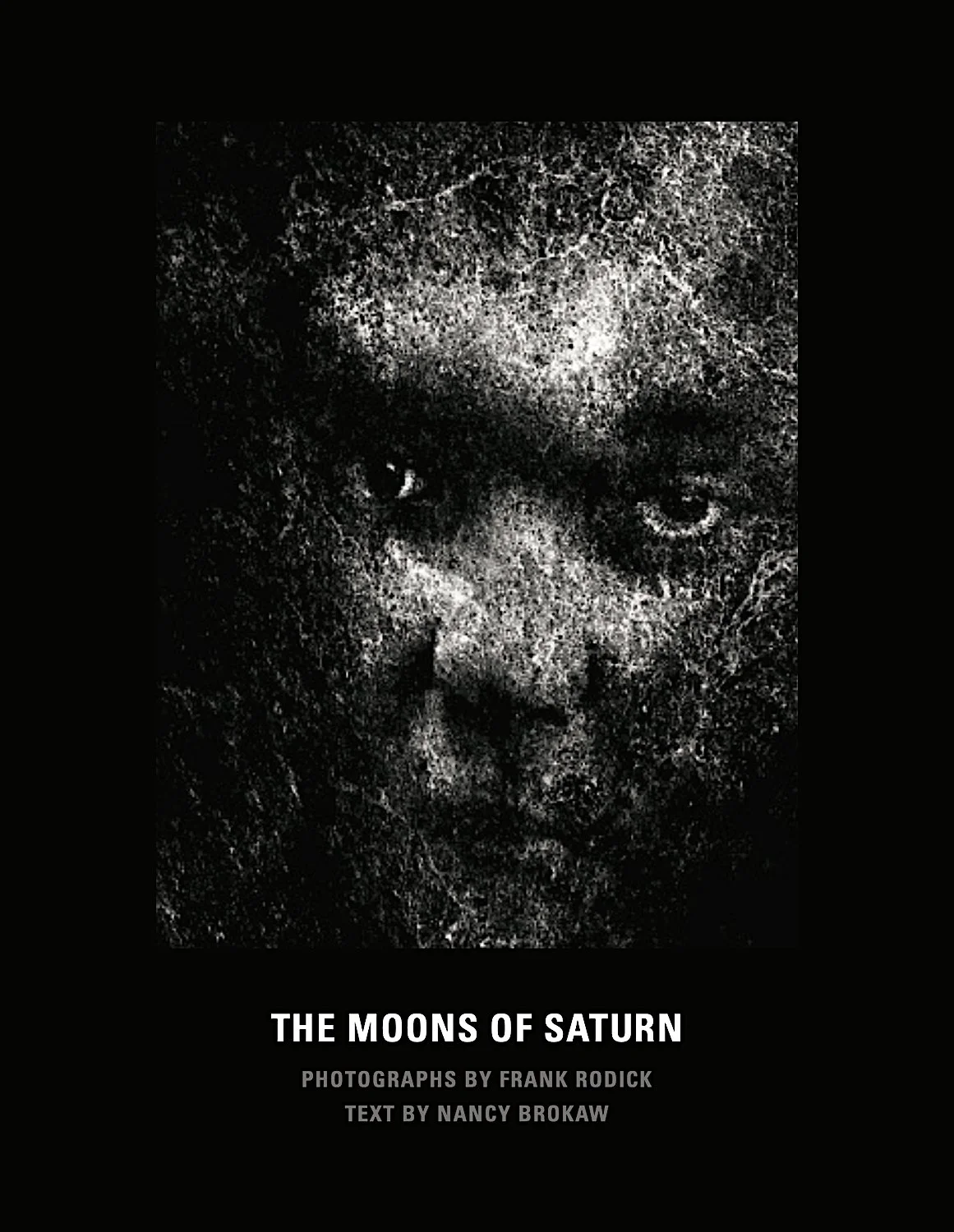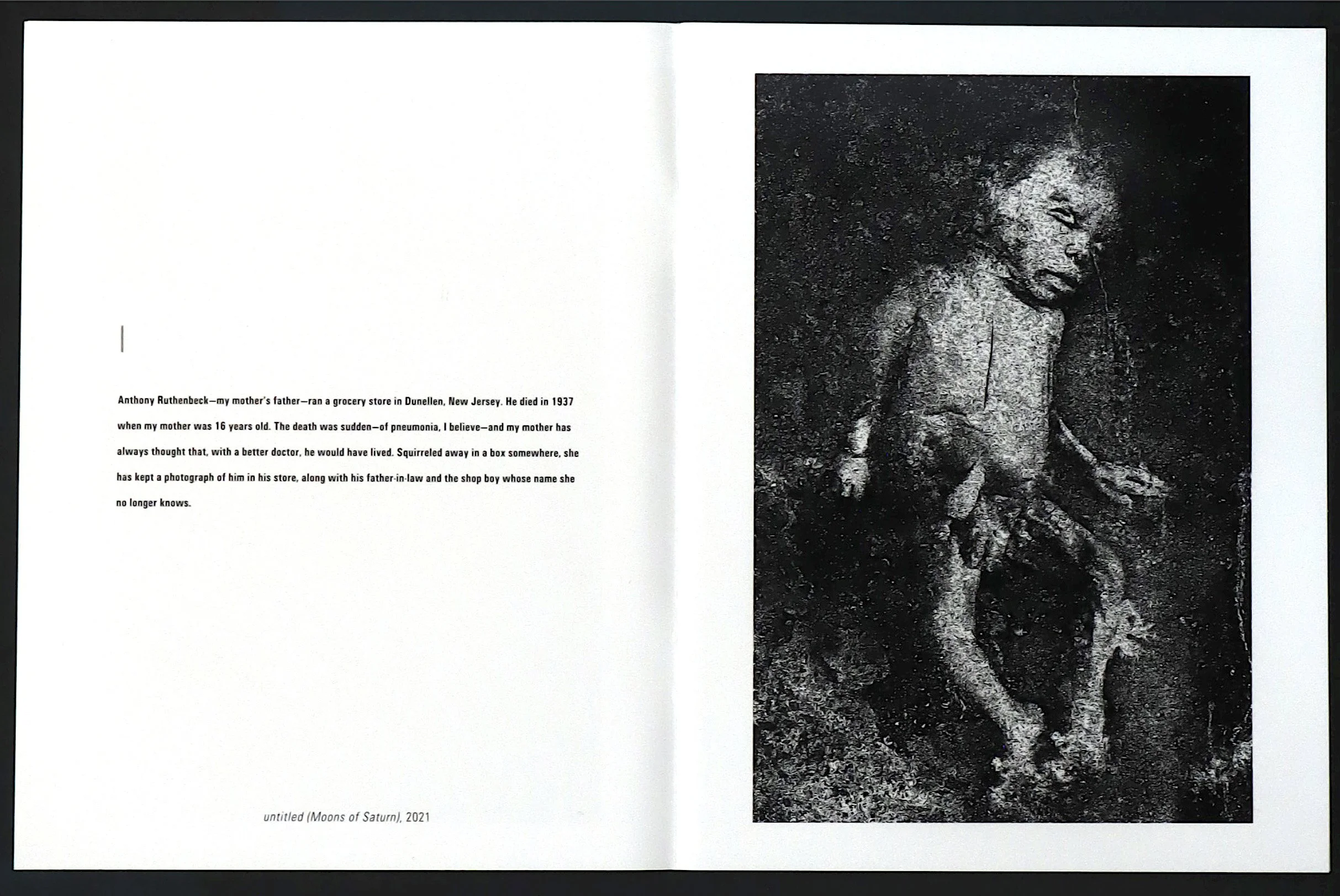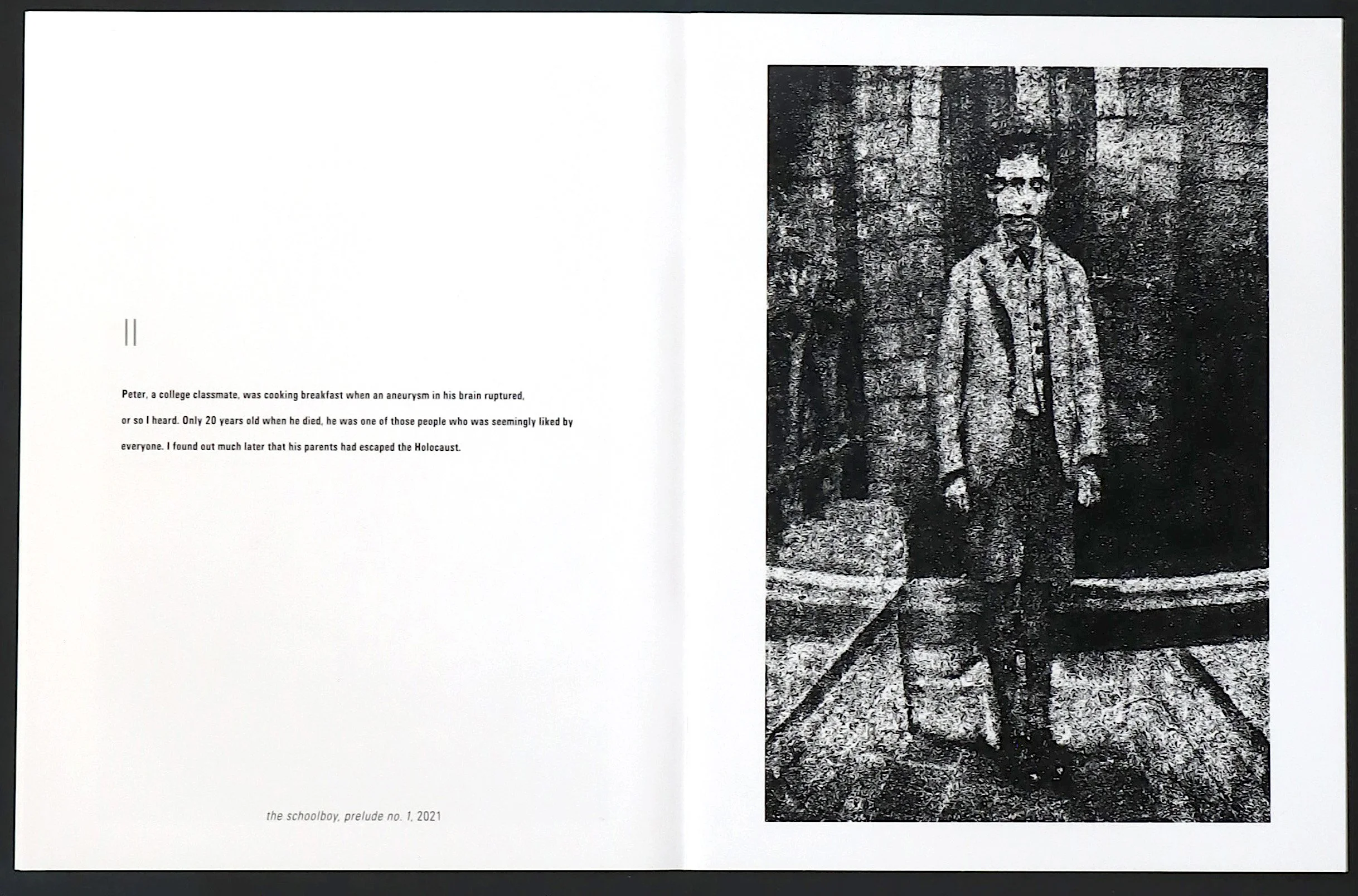about the book
A dialogue in word and image, The Moons of Saturn is a collaboration between artist Frank Rodick and writer Nancy Brokaw.
Based on the suite of images by the same title completed by Rodick in 2021 that reflect on the human condition in extremis, particularly in the pandemic era. Using a foundation of vernacular photographs—of both intimates and strangers—that anchor the constructed images, each picture may be understood as a confrontation of the hidden reality of life in the face of death: dissolution, loss, pain, and tragedy.
In 2022, Rodick shared the series with Nancy Brokaw, a long-time interpreter of his work. Her commentary, which evolved from her correspondence with Rodick, explores the intellectual roots of the images as well as the personal impact of contemplating them.
Details:
Images by Frank Rodick; text by Nancy Brokaw
Softcover, 32 pages, 16 plates
8 ½ x ¼ x 11 inches
Published in partnership with The Photo Review (2023)
Signed copies available for purchase at the photo-eye Bookstore and the phooks.
The Moons of Saturn
A book by Nancy Brokaw and Frank Rodick
Once upon a time, death was our familiar, part of the daily landscape. In the Middle Ages and early Renaissance, life expectancy was somewhere around 30 or 40 years, dying happened at home, and people carried memento mori talismans: prayer books illustrated with images of skeletons, memento mori rings, and—my favourite—Janus-headed rosary beads that depicted, on one side, a person in the prime of life and, on the other, a decomposing corpse.
To us, these objects seem surfeit to need. Why remind yourself of something all around you? The answer, of course, is that their need was different from what we think is ours. The reminder of your mortality was an invitation to contemplate your life. You will die. How should you live? In a world ruled by a millenarian faith, your answer meant the difference between heaven and hell.
The 20th century, both more secularized and more medicalized, did its utmost to banish death from civilian sight. Dying migrated from the home to the hospital, and the contemplation of death was likely to be branded as a morbid preoccupation, something for cloistered nuns or neurotic depressives. Still, death didn't take a holiday, and the century saw breathtaking numbers of casualties: some 40 to 85 million in World War II, up to 65 million in World War I, an estimated 50 million from the 1918 epidemic, 39 million from HIV/AIDS, nine million in the Russian Civil War, upwards of five million from COVID, two million each in the Mexican Revolution, the Partitition, and Afghanistan.”
Conscious of all this carnage, Rodick offers up his own version of the memento mori. The figures that populate The Moons of Saturn are all in the process of disintegration.”
— Nancy Brokaw, from the monograph The Moons of Saturn.





